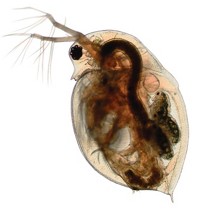Advertisement
Grab your lab coat. Let's get started
Welcome!
Welcome!
Create an account below to get 6 C&EN articles per month, receive newsletters and more - all free.
It seems this is your first time logging in online. Please enter the following information to continue.
As an ACS member you automatically get access to this site. All we need is few more details to create your reading experience.
Not you? Sign in with a different account.
Not you? Sign in with a different account.
ERROR 1
ERROR 1
ERROR 2
ERROR 2
ERROR 2
ERROR 2
ERROR 2
Password and Confirm password must match.
If you have an ACS member number, please enter it here so we can link this account to your membership. (optional)
ERROR 2
ACS values your privacy. By submitting your information, you are gaining access to C&EN and subscribing to our weekly newsletter. We use the information you provide to make your reading experience better, and we will never sell your data to third party members.
Environment
Tracking A Lake’s Single-Celled Life
Biological Monitoring: Researchers watch changes in populations of microorganisms in lakes
by Naomi Lubick
October 13, 2011

Life in a freshwater lake changes from day to day, with swings in temperature and water chemistry. To track those changes and the ways phytoplankton and other single-celled organisms respond, ecologists must conduct tedious microscope work and rely on sporadic field sampling. Now a new method automates the task, with an eye toward forecasting drinking water quality (Environ. Sci. Technol., DOI: 10.1021/es201934n).
Led by Francesco Pomati of theSwiss Federal Institute of Aquatic Science and Technology, researchers paired and automated the monitoring of two commercially available devices: a vertical depth monitor and a buoy containing a flow cytometer. The cytometer, a biological tool that counts and characterizes single cells, can describe cell size and shape, allowing identification of organisms, as well as monitoring characteristics like chlorophyll content, which can signal biological activity. The vertical monitor tracks physical and chemical conditions in the water column.
The researchers tested their floating setup over 34 days in Lake Lugano, at the border of Switzerland and Italy. As often as six times a day, the monitoring platform collected data about changes in populations of different species, distinguishing between organisms such as free-floating cyanobacteria and phytoplankton that swim using cilia. Along with monitoring daily shifts, the researchers were able to track population changes caused by a three-day storm that mixed shallow and deeper water in the lake.
The monitoring data could feed into models that forecast water quality, particularly for drinking water reservoirs, commentsJustin Brookes, of the University of Adelaide, in Australia: Lake-living organisms can affect water taste and odor, as well as create toxic algal blooms.





Join the conversation
Contact the reporter
Submit a Letter to the Editor for publication
Engage with us on Twitter